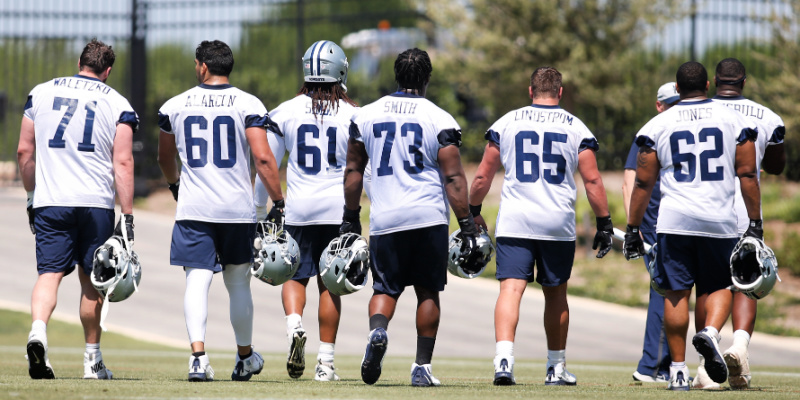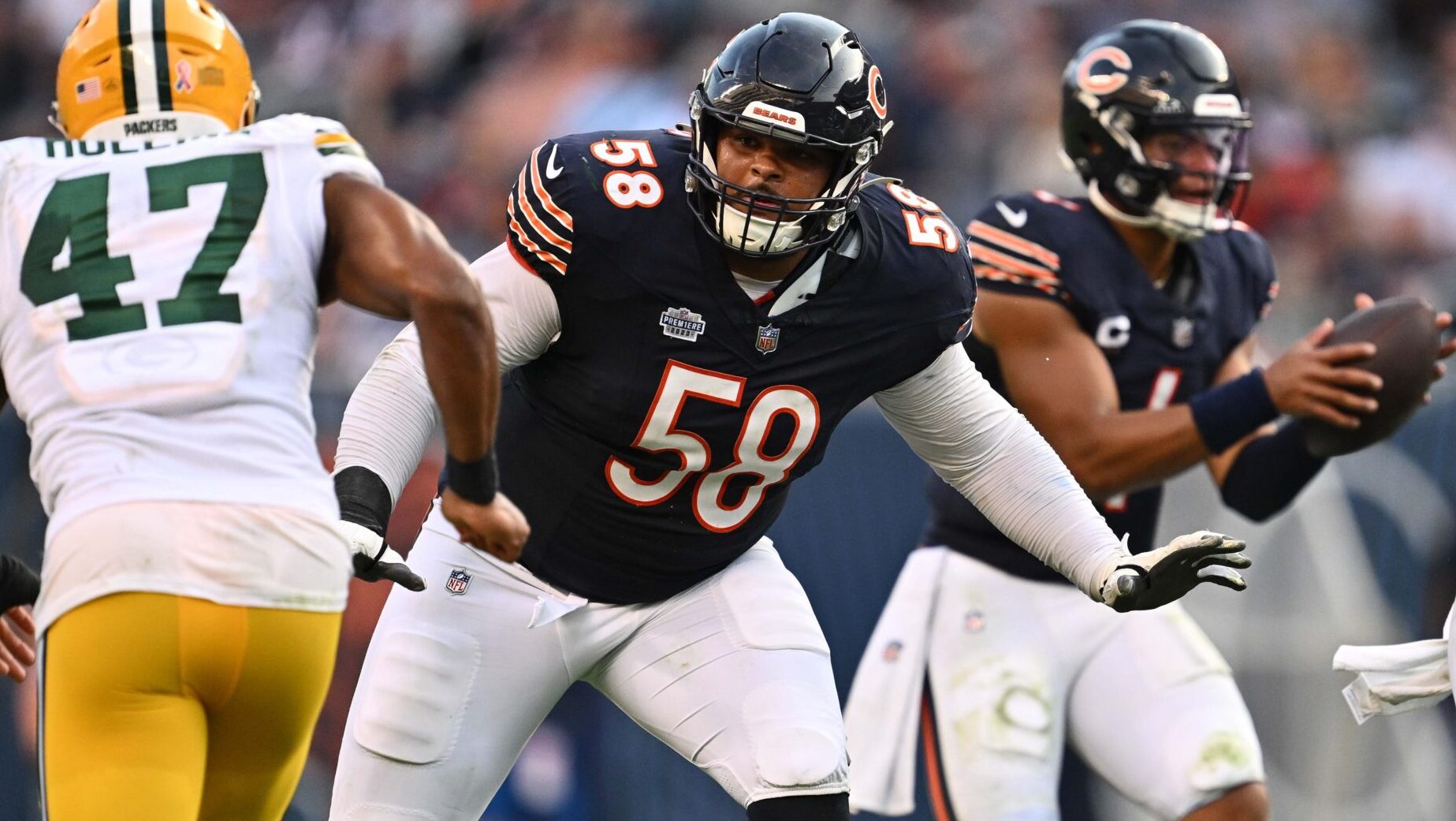Analysis
5/22/22
7 min read
Dirk Koetter and Mike Solari on How NFL Teams Run Rookie Minicamp

Now that the draft process and rookie minicamps have concluded, NFL franchises have moved on to implementing their offseason plans. Minicamp is the time when new draft picks and undrafted free agents can get their first full taste of NFL life, from getting acclimated to the facilities to learning the playbook. In our most recent Wednesday Huddle, The 33rd Team took some time to go over how teams might approach minicamp with a presentation from former NFL head coach Dirk Koetter and offensive coordinator Mike Solari.
Koetter began with a basic overview of what the group of players in minicamp looks like:
“Camp starts off with your roster construction. You’re going to get your guys from four places. You're going to get your draft picks, which is usually five to ten guys. You're going to have your undrafted free agents. This is going to be the biggest group of your guys in rookie minicamp and it's also the group that's changing the most,” Koetter said. “You also have a small group of guys that are players that were with you previous year with less than one year accrued. And that's usually less than five guys in my experience. Then you fill in with tryout guys. Mostly undrafted college guys, but you could have some veterans in that.”
In terms of how big the minicamp roster typically was, Koetter said, “What you're trying to do with that roster is you want to have enough guys to practice so we always tried to be two deep at every position That includes specialists, includes nickel and base on defense, 11 and 12 personnel on offense, etc. Typically, you're going to have between 50 and 60 players in your rookie minicamp.”
Koetter continued by giving a brief look at what the schedule might entail:
“You're going to have a travel day on Thursday. Guys will get their equipment, check into the hotel or the dorms, and have an organizational meeting. And then most teams are going to have two long days on Friday and Saturday and then like a half day on Sunday, depending on if guys are sticking around or not.”
Koetter also explained how he viewed injuries that might occur in minicamp:
“Minicamp is set up around teaching because you know what's really become apparent the last few years is the lag time between the week before the draft the draft and then maybe there's between one and three weeks before your rookie minicamp is just too many injuries guys not carrying on their training, guys not being a football shape to come in and do all the change of direction stuff.”
Another key point for rookie minicamp and getting players acclimated to NFL life is how the practices differ from college practices:
“Your immediate issues are you’ve got to teach your guys how to practice,” Koetter said, “When I went from college to the NFL. The biggest difference in my mind was how the front guys on both offense and defense can stay on their feet and you could practice closer to full speed than you ever could in college. Because guys were on the ground too much. You have to cover stuff like what's your team policy on: Are you letting the ball carrier finish? Can you strip and punch the ball out? Just teaching them how you practice and that's a little bit different from team to team.
Former NFL GM and EVP Mike Tannenbaum asked Koetter how he approached minicamp in terms of wanting his teams to be competitive as a head coach while also minimizing injury risk, to which Koetter replied, “We tried to really desensitize being competitive and rookie minicamp because of the risk of injury. So, we told them upfront that we view rookie minicamp as no winners, no losers…So the competitive part is going to come a little bit later in OTAs and in the fall camp.”
In terms of the overall goals of rookie minicamp, Koetter said that, “The rest of your team is somewhere in phase two (of the offseason program)…Let's not kid ourselves, you know when rookie minicamp rolls around and you have a pretty good idea how many roster spots are actually going to be open and with very little variance, although you're going to find some guys [who can make the roster]. So, your first goal is to find out who can learn and who can retain information. And part of processing information is who can communicate. And you can get some of that in a walkthrough without even going full speed…The other goal is minicamp is to indoctrinate guys into the culture of your team that starts with the GM the head coach, the strength coach, your equipment, training, the media policies, all that kind of stuff.”
Solari viewed minicamp like any other job interview that someone might have in the professional world: “It’s the first introduction to the NFL. Make it count! It’s the first impression, be dynamic, be detailed.”
The top priority for Solari is introducing players to the philosophy of the team and the culture of the organization.
“The key thing is it’s always about the team, so that was the thing that we protected,” he mentioned.
Like any other profession there are multiple philosophies on how to approach certain things, and Solari differed from Koetter on the competition aspect of minicamp:
“We were going to compete in everything we did. That’s what the organization is built off of: competition…Work ethic was the key thing that we pushed on the guys in the sense of, ‘This is what we want to evaluate at all times.’
“Work ethic, ability to finish, offensive line’s ability to strain. Everything is about competition. Preparation, details, communication, and mental reps. The key thing is that we want to push as much at them as possible. The theory was to get them caught up as much as possible, where they can function with the veterans when they come in. Are they going to have it down? Hell no. We're going to go volume. We want to see who can learn. We want to see in the sense of making a business at night, you're studying [during] free time. You're not socializing. You're in your locker, you're in an area where you're studying. You're always preparing to be your best.”
Other things that Solari likes to emphasize are “ball security, tempo, and effort,” along with “being on time, and being early to meetings.”
He also felt it was important for the coaches to quickly learn for themselves how the players learned and how best to teach them to maximize their potential.
Referring to how practices would ideally go, Solari said:
“In the sense of the daily schedule, in the AM we're going to walk through where you get 60 plays. It's not a walkthrough where you're so slow, it's tempo. We want to see them react…seven on seven is excellent, but team is better. Why? Now the offensive lineman can compete against the defensive lineman. We can't go one-on-one pass pro, so it's better for them to go team because we can get more work and get better.”
From there he continued on how evenings would proceed: “Film review. Everything is effort on the film…We make sure all the young guys understand, like on the scout team on the walkthrough, they’ve got to give a great look. They are still being coached because we are showing the plays as well.
“We all have a piece of the puzzle, and we got to understand that those guys are going to be role players anyway, so we went and built a great scout team as well…The coaches are always evaluating in every meeting and throughout every day.”








